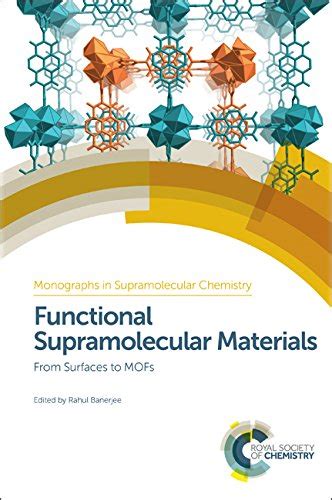chanel f leong book chapter surfaces | Chapter 7: Conducting Framework Materials chanel f leong book chapter surfaces This book provides a comprehensive source of information on the structure and function of organic and metal–organic supramolecular materials. The chapters of this book . Ēdienkarte Cityfood. Lielā ēdienu izvēle katrai gaumei, kvalitatīvi un svaigie produkti, ātrā piegāde Rīgā, var norēķināties ar karti vai skaidrā naudā.
0 · Functional Supramolecular Materials: From Surfaces
1 · From Surfaces to MOFs
2 · Chapter 7: Conducting Framework Materials
Joprojām nezināt, kurš modelis jums ir piemērots? ļaujiet mums palīdzēt jums izlemt.
Functional Supramolecular Materials: From Surfaces
This book provides a comprehensive source of information on the structure and function of organic and metal–organic supramolecular materials. The chapters of this book provide an overview of supramolecular material . This chapter details the latest developments in the exciting research frontier of electronically-conducting metal-organic frameworks (MOFs). Central to the discussion is a .
This book provides a comprehensive source of information on the structure and function of organic and metal–organic supramolecular materials. The chapters of this book .
joel's watch replica
This book provides a comprehensive source of information on the structure and function of organic and metal–organic supramolecular materials. The chapters of this book provide an overview of supramolecular material assembly at various scales, including the formation of 2D polymers and molecular cages. This chapter details the latest developments in the exciting research frontier of electronically-conducting metal-organic frameworks (MOFs). Central to the discussion is a series of parameters which have now emerged for materials’ design, including redox matching, donor–acceptor, mixed-valence, and π-interactions. This book provides a comprehensive source of information on the structure and function of organic and metal–organic supramolecular materials. The chapters of this book provide an overview of supramolecular material assembly at various scales, including the formation of 2D polymers and molecular cages.Select search scope, currently: catalog all catalog, articles, website, & more in one search; catalog books, media & more in the Stanford Libraries' collections; articles+ journal articles & other e-resources
Co-author of Chapter 7 of Functional Supramolecular Materials: From Surfaces to MOFs, in the book series Monographs in Supramolecular Chemistry.Chanel F. Leong's 32 research works with 1,171 citations and 2,837 reads, including: Charge transfer in mixed and segregated stacks of tetrathiafulvalene, tetrathianaphthalene and.
This chapter details the latest developments in the exciting research frontier of electronically-conducting metal-organic frameworks (MOFs). Central to the discussion is a series of parameters which have now emerged for materials’ design, including redox matching, donor–acceptor, mixed-valence, and π-interactions. Intrinsically conducting metal–organic frameworks. C. Leong, P. Usov, D. D’Alessandro. Published 1 November 2016. Materials Science, Chemistry. MRS Bulletin. The development of metal–organic frameworks (MOFs) as microporous electronic conductors is an exciting research frontier that has the potential to revolutionize a wide range of .
The development of metal organic frameworks (MOFs) with high porosity, large surface area, and good electrical properties would offer opportunities for producing functionalized porous materials suitable for energy storage, conversion, and utilization. The inclusion of redox activity into CPs and MOFs is achieved by the incorporation of redox-active ligands and/or multivalent metal nodes. Challenges can arise upon redox cycling due to the disruption of metal–ligand coordination bonds as a result of the change in redox state. This book provides a comprehensive source of information on the structure and function of organic and metal–organic supramolecular materials. The chapters of this book provide an overview of supramolecular material assembly at various scales, including the formation of 2D polymers and molecular cages. This chapter details the latest developments in the exciting research frontier of electronically-conducting metal-organic frameworks (MOFs). Central to the discussion is a series of parameters which have now emerged for materials’ design, including redox matching, donor–acceptor, mixed-valence, and π-interactions.
This book provides a comprehensive source of information on the structure and function of organic and metal–organic supramolecular materials. The chapters of this book provide an overview of supramolecular material assembly at various scales, including the formation of 2D polymers and molecular cages.Select search scope, currently: catalog all catalog, articles, website, & more in one search; catalog books, media & more in the Stanford Libraries' collections; articles+ journal articles & other e-resources
Co-author of Chapter 7 of Functional Supramolecular Materials: From Surfaces to MOFs, in the book series Monographs in Supramolecular Chemistry.
Chanel F. Leong's 32 research works with 1,171 citations and 2,837 reads, including: Charge transfer in mixed and segregated stacks of tetrathiafulvalene, tetrathianaphthalene and.
This chapter details the latest developments in the exciting research frontier of electronically-conducting metal-organic frameworks (MOFs). Central to the discussion is a series of parameters which have now emerged for materials’ design, including redox matching, donor–acceptor, mixed-valence, and π-interactions. Intrinsically conducting metal–organic frameworks. C. Leong, P. Usov, D. D’Alessandro. Published 1 November 2016. Materials Science, Chemistry. MRS Bulletin. The development of metal–organic frameworks (MOFs) as microporous electronic conductors is an exciting research frontier that has the potential to revolutionize a wide range of .The development of metal organic frameworks (MOFs) with high porosity, large surface area, and good electrical properties would offer opportunities for producing functionalized porous materials suitable for energy storage, conversion, and utilization.


j12 watch replica
Kvalitatīvi un svaigi produkti apvienojumā ar plašu recepšu klāstu un garšu daudzveidību. Turklāt vari būt drošs – mēs rūpējamies par to, lai vienmēr piedāvātu tev pašu labāko. Uzzini vairāk par mūsu kafiju un gardajiem ēdieniem – hotdogiem, burgeriem, sviestmaizēm un smalkmaizītēm – un ieplāno savu nākamo maltīti pie mums!
chanel f leong book chapter surfaces|Chapter 7: Conducting Framework Materials



























